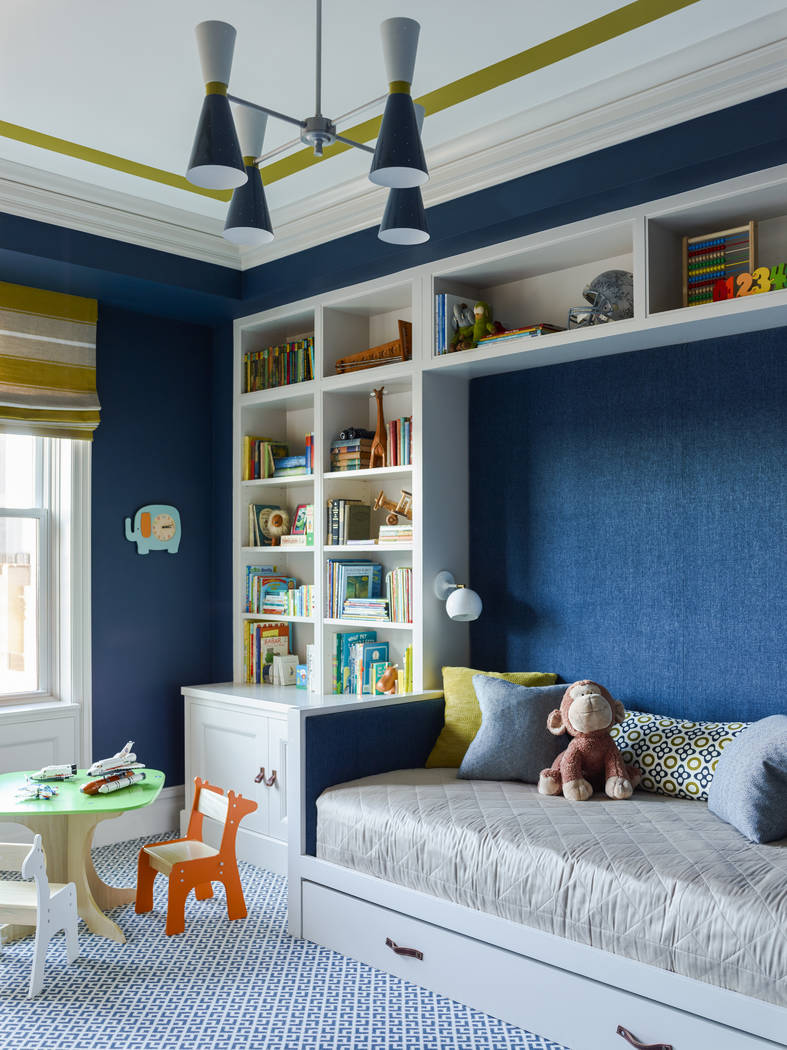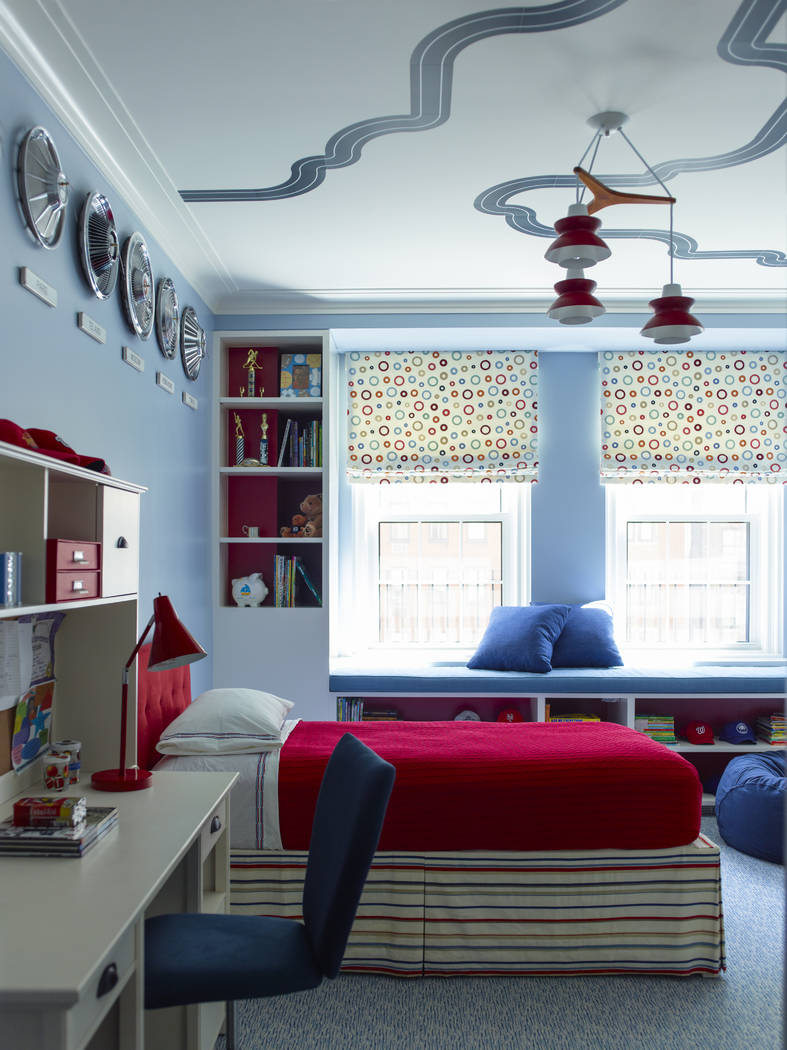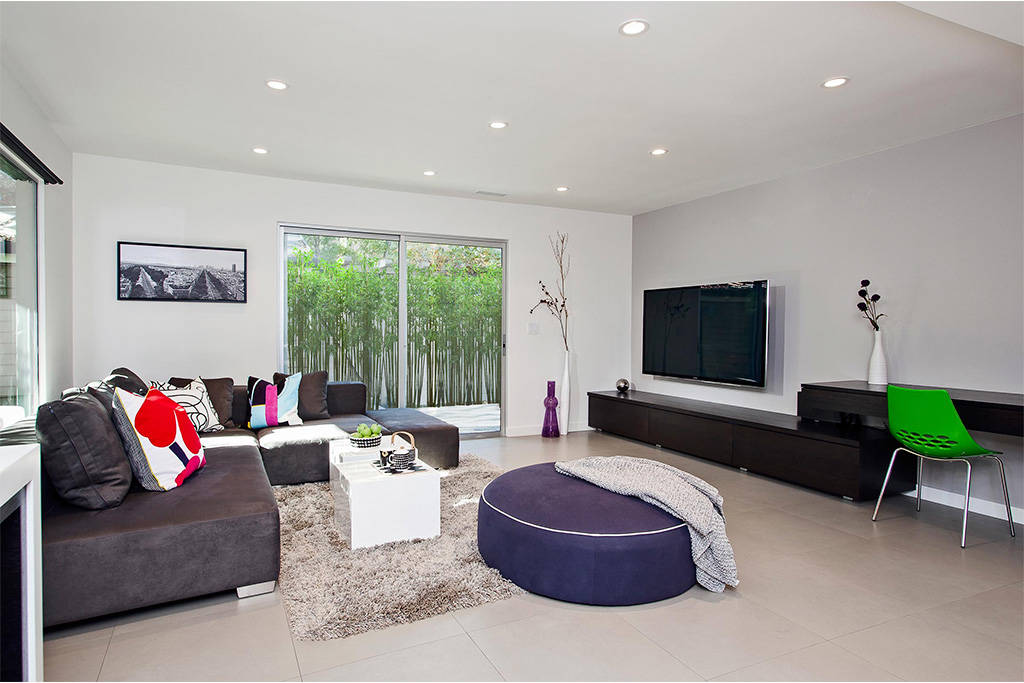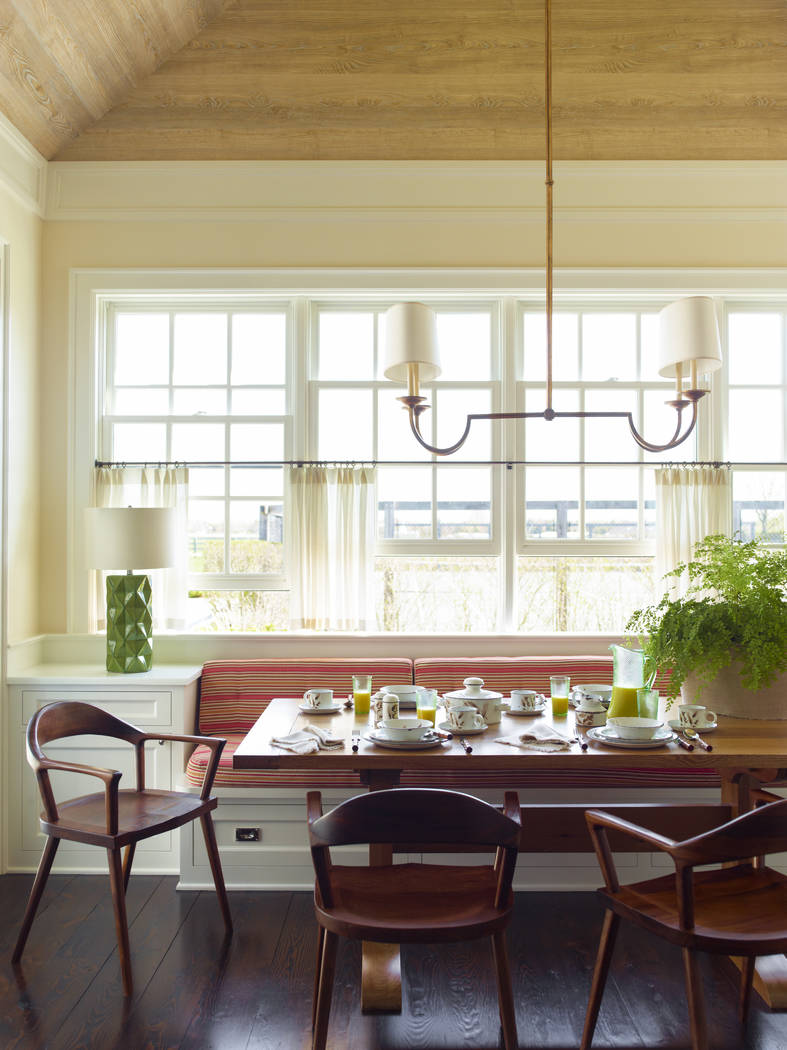Childproof decor can be sophisticated, fun
Making sure a home is safe for children is top of mind for most parents, especially new ones. But there are also those moms and dads who find it challenging to balance “kid-proofing” with something aesthetically appealing.
Designers say you can have both. Sure, there are compromises, but a family home doesn’t need to look overly kid-ish, they say. It can still look great while meeting the needs of everyone in the household.
“We make choices that allow parents and families to live a little more stress-free and a little more efficiently. I don’t feel those choices need to sacrifice style or a particular look,” said Gideon Mendelson, founder of Mendelson Group, a New York City-based interior design firm. In fact, the designer says, working with families (and having one himself) actually makes him a better designer.
“You realize it’s not just about putting stuff into a home,” he said. “It’s about how architecture, layouts, and design choices can improve relationships.”
Modern design in family rooms
Mary Maydan, founder of Maydan Architects, a full-service architecture and interior design firm in Silicon Valley, is known for creating ultramodern interiors. As a mother of four, she understands the trade-offs when it comes to contemporary aesthetics and the realities of family life, especially in hectic family rooms.
That’s where she turns to coffee tables with rounded edges instead of sharp corners. She also suggests putting vases and fragile items on higher shelves and uses museum putty to hold them in place. With kids in the mix, she also prefers overhead lights to table lamps. And when it comes to sitting areas, Maydan likes modular sofas, which can be easily moved around.
“If they’re ever stained, you can replace one of the pieces, too,” she added.
Austrie Messer, a junior designer with Las Vegas-based Lisa Escobar Design, suggests instead of using coffee tables made of wood or metal, go with a vinyl upholstered ottoman in the living room.
“The extra cushion is more comfortable, can act as another seat or stool, if needed, and the vinyl makes for easy wipeable cleanup,” she said.
Impromptu spaces, storage
To Mendelson, kids offer the opportunity to create impromptu spaces to share. A table in his home library, for example, is a great place where kids solve puzzles, read and work on art projects.
Even in his master bedroom, he created a seating area for them to watch television, which also allows his spouse and him to ease into the day on weekend mornings when the kids storm the room.
Storage is another important piece in planning spaces with kids in mind. Mendelson likes to use millwork to build in drawers, shelves and other stow-away opportunities for kids’ toys, games and personal items.
“When the kids’ stuff starts to trickle in from other rooms or the playroom, that’s when mess and clutter start to happen,” the designer noted. “That’s why we design with millwork, closed cabinetry and other spaces. … It’s almost like designing a boat. Every inch counts. Everything has a place.”
Maydan looks for ways to incorporate bins, cubbies and shelves on wall units and uses space under benches to accommodate a wide range of items.
“Visually appealing storage in the main living areas allows children to be part of the family while they play, and for easy cleanup when they are done,” Maydan added.
Handling bedrooms as kids age
Every child eventually outgrows his or her “big kid” room. With that comes changing tastes. Parents can avoid complete room overhauls by embracing neutral colors when kids are young and not buying colorful furniture.
“That midnight blue bed may look beautiful now, but kids grow out of it,” Maydan said. And avoid colorful touches that are permanent, too, such as tiles that have kids’ patterns or colors in bathrooms. That purple tile adored today won’t be embraced later, the designer cautioned.
Mendelson suggests choosing textiles the child can grow with.
“Things like curtain panels, shades and fabric on furniture are harder to replace, so they should be a more timeless look that can last while a child ages,” he said. “Smaller items — throw pillows, lampshades and linens — are often less expensive and less permanent, so they can be swapped out as the kids get older and tastes evolve.”
Messer will sometimes suggest removable wallpaper to add some fun and flexibility. “(It) can be changed or taken off when wanted, but can last for years,” she said.
Use black and white frames, added Diana Rangel, a junior designer with Lisa Escobar Design. You can swap out the photos in the frames to keep refreshing the space. The designer also likes to experiment with textiles and rugs.
“Get comfy rugs, blankets and pillows made from faux fur or sheepskin and spread them through the room,” she said.
Materials, floors
When designing with kids in mind, durable surfaces that don’t scratch easily are important. Today, it’s easy to find synthetic, or engineered, versions of marble and stone, and the increasingly popular quartzite looks great and can withstand wear and tear.
Durable fabrics are also important, Mendelson said. Avoid materials like silk. Many of today’s synthetic leathers and even vinyl look and feel like the real thing.
“Even acrylics that used to feel hard as plastics are now like velvet,” he added.
And when it comes to floors, there’s always a give and take between style, durability and functionality.
“I love rugs, but try not to get expensive ones, which you constantly worry about keeping untouched” Maydan said. “I try to look for soft rugs with a pad underneath.”
Messer even suggests using an outdoor rug, indoors.
“It may be harder to find super soft fabric rugs, but there are a lot of options that will still be comfortable, look good and be easy to clean,” she said. “For example, recycled polyester is highly durable, soft, and spills can be blotted up rather quickly. One-hundred percent all-weather polypropylene rugs are durable, waterproof and can be rinsed with a hose. Always read the care instructions to find out what your rug is made from before trying any of these solutions.”
Accents, subtle touches
To personalize spaces, Rangel will incorporate different types of wall decor, such as figures or letters that are meaningful to the child but can be changed out as tastes shift. Maydan enjoys framing and displaying children’s art projects to add character and unique contrasts to areas of a home.
If your child’s old enough, involve him or her in the design process, Maydan advises. Even if he or she only gives input for small accents and personal touches, a feeling of being invested can help.
“It’s a lot more likely they’ll keep it nice if you get their vision of what they want a space to be,” Maydan said.

























